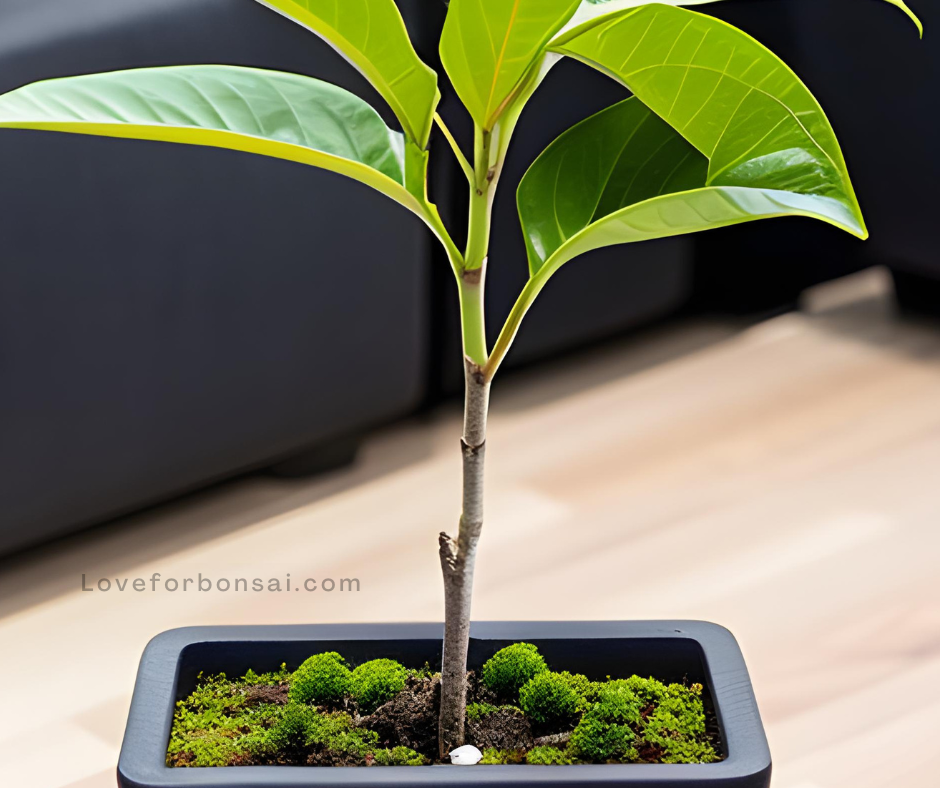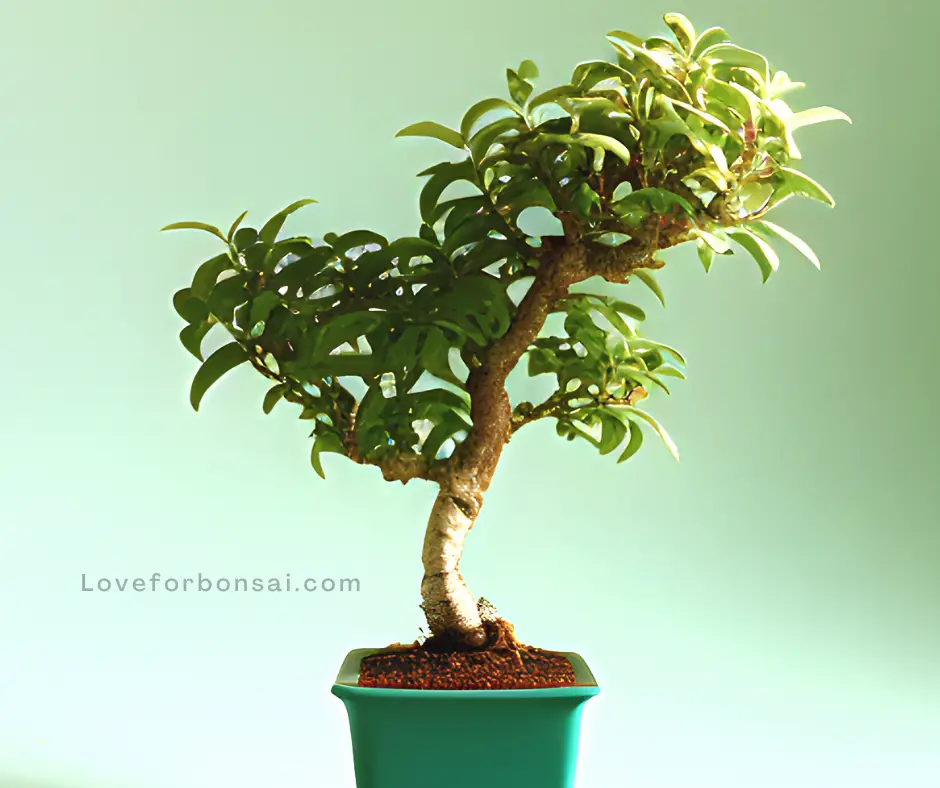Mangoes are delicious tropical fruits that many people enjoy. But did you know that you can also grow a mango bonsai tree in a pot?
Mango Bonsai trees are a beautiful and unique addition to any home or garden. These miniature versions of the famous fruit-bearing tree offer a fascinating way to grow and display this delicious fruit.
But how exactly do you grow a Mango Bonsai tree, and what are the best ways to take care of it?
In this guide, we will explore everything you need to know about growing and maintaining a Mango Bonsai tree, from planting to pruning and beyond.
What is a Mango Bonsai?
A Mango Bonsai tree is a miniature version of a Mango tree, typically grown in a pot or container. It is a type of Bonsai tree that is becoming increasingly popular due to its attractive appearance, easy maintenance, and delicious fruit.
The Mango tree is native to South Asia and is a popular fruit tree worldwide. The Mango Bonsai tree can grow up to 2-3 feet tall and can be grown both indoors and outdoors.
Why Grow Mango Bonsai?
Growing a Mango Bonsai tree has several benefits, including:
- Attractive Appearance: Mango Bonsai trees are known for their beautiful leaves, unique shapes, and colorful fruits. They are sure to add a touch of elegance to any space.
- Easy Maintenance: Mango Bonsai trees require minimal maintenance and are relatively easy to care for, making them perfect for beginners.
- Fruit Production: Mango Bonsai trees can produce delicious fruits that can be enjoyed by both you and your family.
How to Grow a Mango Bonsai?
Growing a Mango Bonsai tree requires some basic knowledge and skills. Here are the steps you should follow:
Step 1: Choose the right variety and pot
Not all mango varieties are suitable for bonsai cultivation. You need to choose a dwarf or semi-dwarf variety that can produce fruits in a small space.
Some of the best mango varieties for bonsai creation include Irwin, Nam Doc Mai, King Thai, Carrie, Coggeshall, Neelam, Glenn, and Amrapali. These varieties have small fruits, compact growth habits, and attractive foliage.
Now, choose a pot that is large enough to accommodate the root system of your mango bonsai tree.
The pot should have drainage holes at the bottom and be made of ceramic or clay. The pot should be about 10 to 15 inches in diameter and 8 to 10 inches in depth.

Step 2: Plant the seedling or graft
You can either start your mango bonsai tree from a seedling or a graft. A seedling is a young plant that grows from a seed. A graft is a branch or bud that is attached to another plant’s rootstock.
Grafting allows you to grow a specific variety of mango on a different rootstock that may be more resistant to diseases or pests.
To grow a mango bonsai from a seedling, first select a ripe and healthy mango fruit and extract the seed from it. You need to wash the seed and remove any pulp or fibers from it.
Then fill a bonsai pot with a 50/50 mix of potting soil and coarse sand and place the seed about an inch below the soil surface and cover it lightly with soil.
You need to water the pot well and keep it in a warm and sunny place. It may take three to four weeks for the seed to germinate and sprout.
To grow a mango bonsai from a graft, you have to buy a grafted mango plant from a nursery or online store. Choose a plant that has a healthy rootstock and a desirable scion (the variety of mango that you want).
Now, carefully remove the plant from its original pot and transplant it into your bonsai pot with fresh soil. Make sure that the graft union (the point where the scion and rootstock join) is above the soil level.
Where to Place Your Mango Bonsai?
Mango bonsai trees need at least six hours of direct sunlight per day to grow well and produce fruits.
Therefore, it’s important to place your tree in a spot where it can receive at least six hours of direct sunlight every day. You should also ensure that the tree is protected from harsh winds and extreme temperatures.
If you live in a cold climate, you may need to bring your mango bonsai tree indoors during the winter and place it near a sunny window or under artificial lights.
The ideal temperature range for mango bonsai trees is between 60°F and 85°F.
Step 3: Water and fertilize the tree
Watering and fertilizing are essential steps for keeping your mango bonsai tree healthy and productive. Watering involves providing enough moisture for the roots and leaves of the tree.
Water your mango bonsai tree when the top inch of the soil feels dry to the touch. Avoid overwatering or underwatering as both can cause root rot or dehydration.
Fertilizing involves providing nutrients for the growth and development of the tree. You should feed your mango bonsai tree once a month during the growing season with a balanced liquid fertilizer diluted to half strength.
Stop fertilizing the bonsai during the winter when the growth slows down.
How to Take Care of Your Mango Bonsai Tree
The Mango Bonsai tree requires regular care to keep it healthy and attractive. Here are some tips to keep in mind:

Prune and shape the tree
Pruning and shaping are essential steps for creating a beautiful and healthy mango bonsai tree. Pruning involves removing unwanted branches, leaves, and buds to control the growth and appearance of the tree. Shaping involves bending and wiring the branches to create an artistic form.
Prune your mango bonsai tree regularly to maintain its size and shape. Use sharp scissors or pruning shears to cut off any dead, diseased, or damaged branches.
Remove any branches that cross each other or grow in an undesirable direction. You need to thin out any dense foliage or clusters of fruits to allow light and air circulation.
Prune your mango bonsai tree at least once a year, preferably after the fruiting season.
You also need to shape your mango bonsai tree according to your preference and style. You can use copper or aluminum wire to wrap around the branches and bend them gently into different angles and curves.
You may also opt for weights or anchors to pull down the branches and create more movement.
Be careful not to damage or break the branches while shaping them. You also need to remove the wire after six months or when it starts cutting into the bark.
Styling a Mango Bonsai Tree
Styling your Mango Bonsai tree is an important part of the process, as it allows you to create the desired shape and design. There are several styles to choose from, including formal upright, informal upright, slanting, and cascading.
Repotting your mango bonsai tree:
As your mango bonsai tree grows, it will need more space for its roots and nutrients for its growth. So you need to repot your mango bonsai tree every two to three years in spring or summer.
Choose a slightly larger pot with drainage holes and fill it with fresh bonsai soil mix. Carefully remove your mango bonsai tree from its old pot and trim off any dead or excess roots.
Place it in the new pot and fill in the gaps with soil. Water thoroughly and place it in a shaded spot for a few days to recover.
You can read more about how to repot a bonsai tree here in this post.
Common pests and diseases:
Mango bonsai trees are susceptible to some pests and diseases such as scale insects, mealybugs, spider mites, anthracnose, powdery mildew, and root rot.
Inspect your mango bonsai tree regularly for any signs of infestation or infection and treat them promptly with organic or chemical remedies.
Propagation
Propagation is the process of growing new Mango Bonsai trees from cuttings or seeds. Take cuttings during the growing season and placed in a rooting hormone before planting. You can also use seeds and plant them in a seed-starting mix and germinate under controlled conditions.
Frequently Asked Questions (FAQs):
Can Mango Bonsai trees be grown indoors?
Yes, Mango Bonsai trees can be grown indoors as long as they receive enough sunlight.
Do Mango Bonsai trees require a lot of water?
Mango Bonsai trees require regular watering but should not be overwatered, as this can cause root rot.
How long does it take for Mango Bonsai trees to produce fruit?
Mango Bonsai trees can take several years to produce fruit, depending on their age and growing conditions.
Can Mango Bonsai trees be pruned during the growing season?
It’s best to prune Mango Bonsai trees during the dormant season, as this allows the tree to recover more quickly.
Can Mango Bonsai trees be grown from seeds?
Yes, Mango Bonsai trees can be grown from seeds, but it can take several years for them to grow into mature trees.
Conclusion:
Growing and caring for a Mango Bonsai tree can be a fulfilling and rewarding experience. With patience, dedication, and the right techniques, you can create a stunning miniature version of this popular fruit-bearing tree that will thrive for years to come.
We hope this guide has provided you with all the information you need to grow and care for your Mango Bonsai tree successfully.
If you found this article helpful, please feel free to share it with your friends and family. And don’t forget to explore more articles on our site for more tips and tricks on growing and caring for different types of bonsai trees.
With the right knowledge and techniques, you can create a beautiful collection of miniature trees that will bring joy and beauty to your home or garden. So, take action and start growing your own Mango Bonsai tree today!